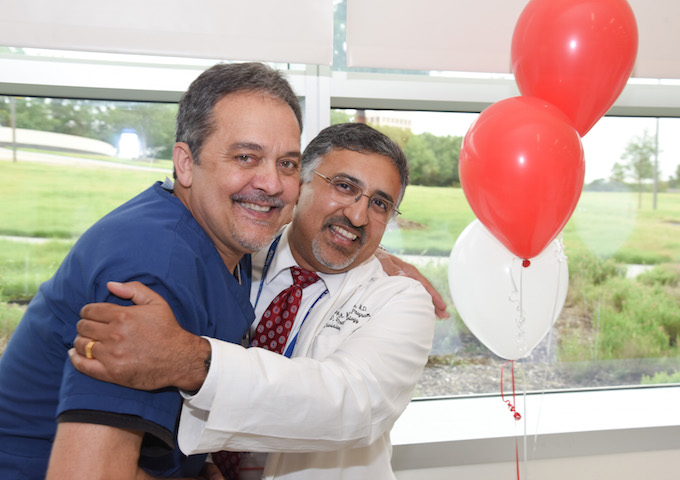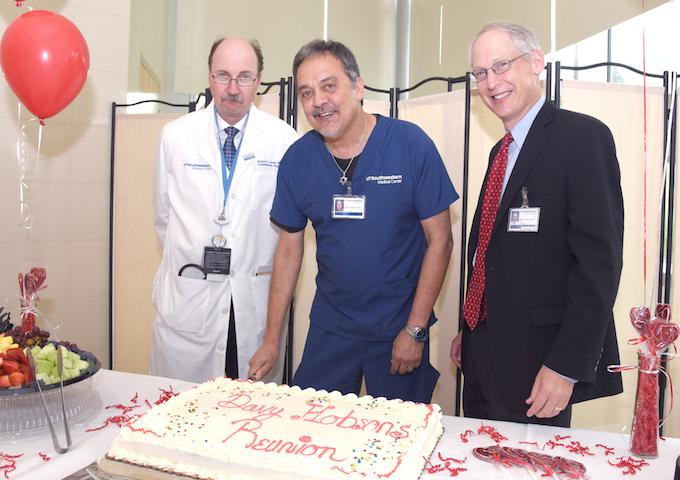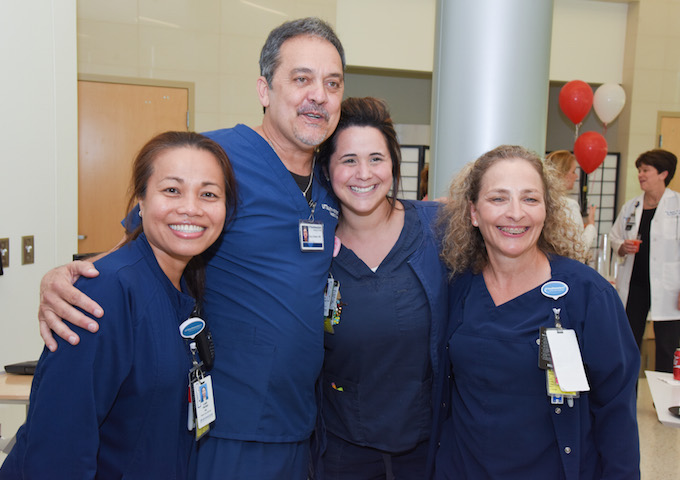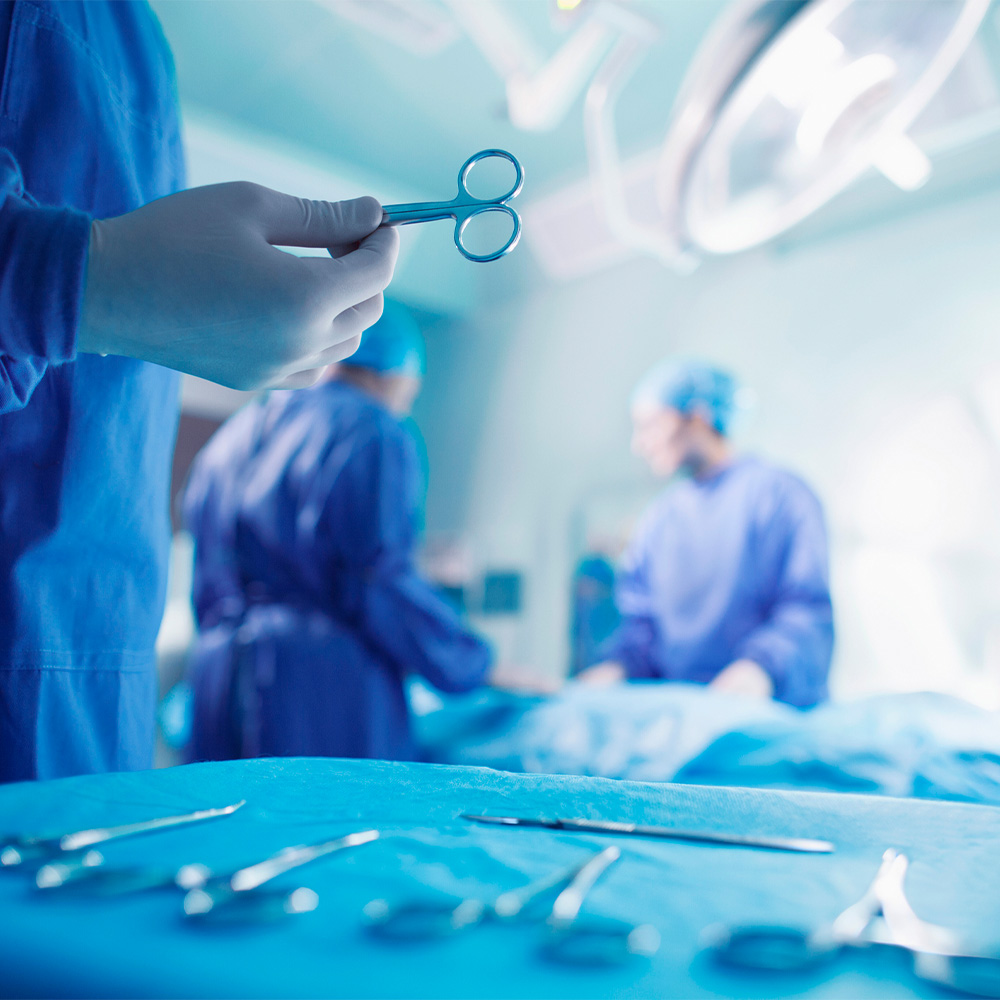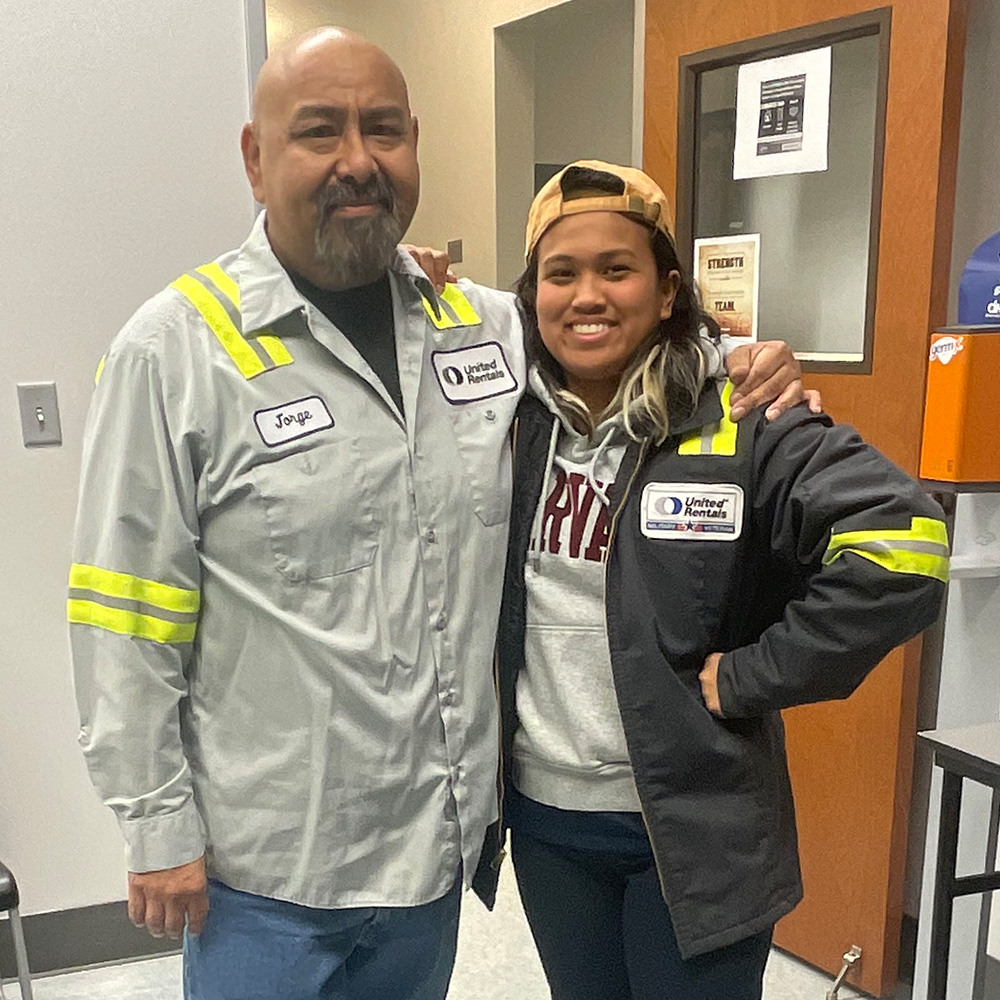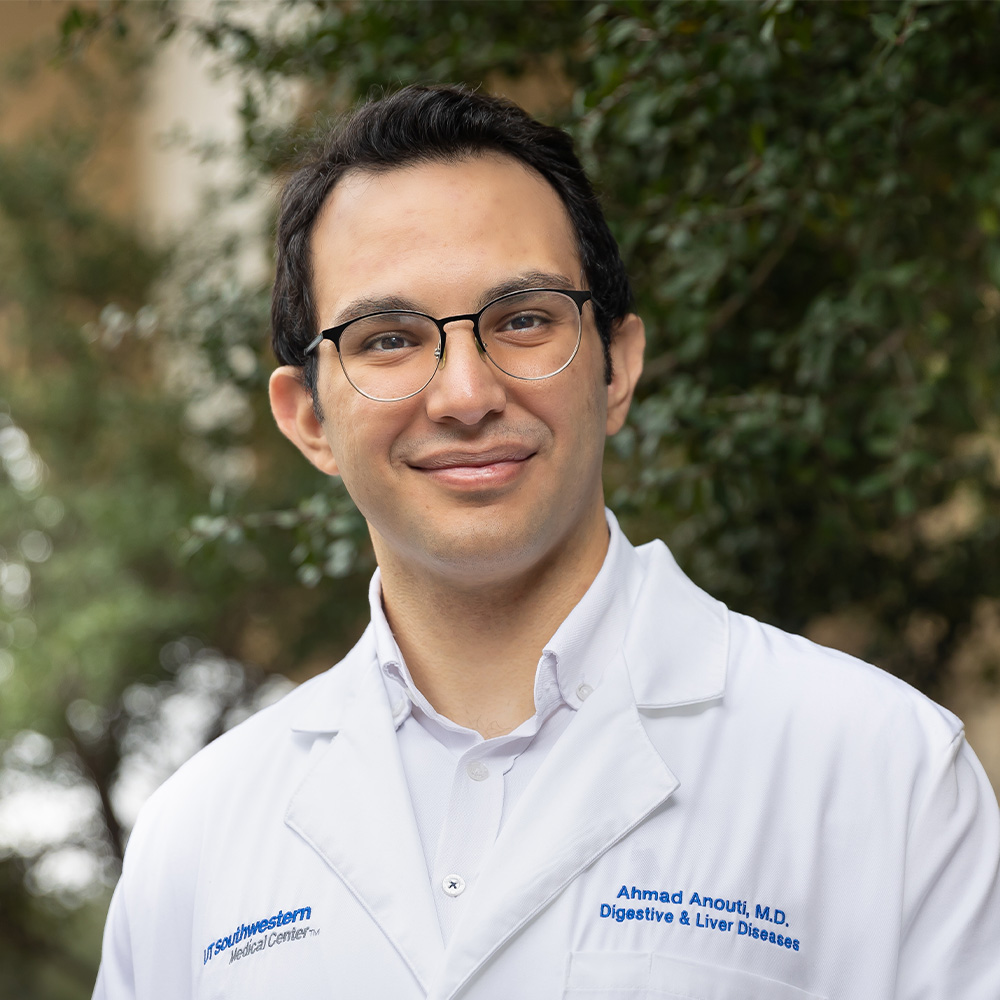Tears, joy, and gratitude flow at reunion of patient and caregivers
Christine Kearney couldn’t believe her eyes.
The physical therapist was at her job at UT Southwestern Medical Center, and standing before her in the hallway was Davy Hobson, a former patient.
Mr. Hobson was here in 2013 as a heart transplant patient, when Ms. Kearney and many of her co-workers had seen him at his worst. At the time, he was dangerously ill. One doctor went so far as to say Mr. Hobson was “walking toward the light.”
Still, the surprise wasn’t that he was standing in front of her four years later, looking healthy as could be. Ms. Kearney knew he had recovered well.
It was that he was clad in scrubs. UT Southwestern scrubs.
“What is happening?” a confused Ms. Kearney asked.
“I work here now,” he said with a smile.
As a transplant patient who spent months in the hospital, Mr. Hobson was already part of the UT Southwestern family. But on April 3, 2017, when he started work here as a home health nurse, it became official.
That surprised reaction has become a common occurrence – running into people who treated him during his lengthy stay as a patient.
When he began at UT Southwestern, Mr. Hobson, now 63, imagined what he wanted to tell his former caregivers. “I wanted to reunite with all of them, because I’ve just always wanted to say: ‘Hey, it’s me. Look at the results of your good work. And thank you.’”
This summer, he got his wish. Acting on Mr. Hobson’s suggestion, University Hospital staff arranged a reunion of staff and patient to mark the fourth anniversary of his transplant at UT Southwestern.
Held Aug. 18 in William P. Clements Jr. University Hospital, the event brought Mr. Hobson together with many of the faces who helped him stay alive – and ultimately thrive.
“This is fabulous,” Ms. Kearney, PT, MT, said of the reunion. “Working on the transplant team, we have lots of stories, and it’s always good when we can have celebrations like this, to celebrate wonderful outcomes.”
There was a time when that wonderful outcome wasn’t so certain.
A Creative Solution
Mr. Hobson initially came to the Medical Center to be seen for an inflammatory disease called cardiac sarcoidosis, which had led to major weakening of both sides of his heart muscle as well as serious heart rhythm problems. He was developing heart failure.
The UTSW team prepared Mr. Hobson for an ablation procedure, which involves running a catheter through a vein to the heart to correct a heart rhythm problem. The ablation had barely started when Mr. Hobson abruptly went into cardiac arrest. The team brought him back, but he crashed again. This was a life-threatening crisis.
“As team members worked to restart Mr. Hobson’s heart, give him multiple transfusions, and keep him alive, we came to a decision,” said Clinical Chief of Cardiology Mark Drazner, M.D., and Professor of Internal Medicine, headed the team that received the new patient. “He’d need a transplant, but to keep him alive until a heart became available, we were going to have to try something new.”
A patient awaiting a heart transplant often will be kept alive with a machine that helps the heart circulate the blood to the body. This machine, called a left ventricular assist device (LVAD), is surgically implanted with part of it inside the chest and part of it outside. But because Mr. Hobson’s heart muscle was weakened on both sides, Dr. Drazner and the UTSW heart transplant team decided to implant two ventricular assist devices (VADs) – one to boost the pumping action on both sides of his heart.
“It was an unusual move, but we were faced with an unusual situation, and we needed to be creative,” Dr. Drazner said.
“Fortunately, the BiVAD procedure worked just as we had hoped it would,” Dr. Drazner said. “The two VADs kept Mr. Hobson going for four months as he waited for a heart to become available. Then, in June 2013, we were able to give him the news everyone had been waiting for.”
That led to a terrific recovery and ultimately landed the former patient back at UT Southwestern in August 2017 – albeit for a happier reason.
A Tearful Reunion
“It’s great to see him doing so well,” said Dr. Michael Jessen, Chair of Cardiovascular and Thoracic Surgery at UT Southwestern Medical Center and the surgeon who performed Mr. Hobson’s transplant.
“Events like this remind us that this is not the result of any one person, but the result of an entire team of people,” Dr. Jessen said. “There are about 20 people here in the room, but there are probably another 50 or 60 who were involved in his care – all of whom had very, very important roles in this. From the heart failure team and the nursing staff to the surgical team and respiratory therapists and ICU nurses to the social workers and everybody along the way. You cannot do this without all those pieces coming together.”
When Mr. Hobson addressed the crowd, his voice was choked with emotion.
“From the bottom of my heart, thank you very much, for … There’s no way I can thank you. And I apologize to some of the nurses, and the therapist back there,” he said, pointing at a grinning Ms. Kearney.
“I know I was a difficult patient sometimes. I couldn’t have gotten this great of care anywhere in the United States as far as I’m concerned. I was very impressed with the diligence and the thoroughness of everyone here. They do work as a team and actually pay attention to the small things.”
One of those things was helping him and his wife celebrate their 30th wedding anniversary while he was in the hospital.
“The nurses surprised us,” he recalled before the reunion. “They asked me to come out of my room, and I got my walker. They had prepared a special room – the lights were dimmed, and the candles were burning, and we had a beautiful dinner. They were just so giving. My wife and I grew very fond of them.”
Kelly Johnson, Mr. Hobson’s transplant coordinator, was awed by her patient’s journey.
“It’s really amazing,” Ms. Johnson said. “It’s very meaningful to be a part of something that allows people the opportunity to learn how to become strong and capable and healthy again. On top of that, we have the privilege of having him working here at UT Southwestern.”
Dr. Drazner also attended the August reunion and told the crowd that one of his patients mentioned that he had met another one of Dr. Drazner’s transplant patients.
“My other patient told me: ‘He’s the home health nurse who’s taking care of me.’ It’s pretty remarkable,” Dr. Drazner said. “Taking someone as sick as he was and making him better so he’s now able to help other people. That’s really what it’s all about.”
UT Southwestern can count Davy Hobson as one of its biggest fans. “And not just because they saved me and gave me a heart transplant – although that would be enough,” he said. “But because I think they’re the leading academic medical center around. They will spend time going down rabbit holes if that’s what it takes. I think there’s a lot of great knowledge and expertise, not just among the physicians, but the nursing staff as well. They’re top-grade.”
In his work as a home health nurse, Mr. Hobson doesn’t usually tell his patients about his dramatic saga. Unless they’re transplant patients.
“Then I make it a point to tell them about my experience,” he said. “And they love it. They light up; their families light up. It’s very encouraging to them to see a positive outcome standing right in front of them.”
As Mr. Hobson’s care team knows, that works both ways.
Dr. Drazner holds the James M. Wooten Chair in Cardiology.
Dr. Jessen holds the Frank M. Ryburn, Jr., Distinguished Chair in Cardiothoracic Surgery and Transplantation.

